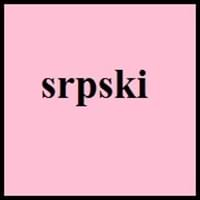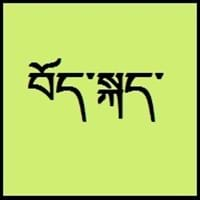Countries
Bosnia and Herzegovina, Kosovo, Serbia, Slovakia
China, Nepal
National Language
Bosnia, Croatia, Montenegro, Serbia
Nepal, Tibet
Second Language
Not spoken in any of the countries
Not spoken in any of the countries
Speaking Continents
Europe
Asia
Minority Language
Croatia, Czech Republic, Hungary, Macedonia, Montenegro, Romania, Slovakia
China, India, Nepal
Regulated By
Board for Standardization of the Serbian Language
Committee for the Standardisation of the Tibetan Language
Interesting Facts
- Serbian language was derived from the Old Church Salvic, as the language was commonly spoken by most of Slavic people in the 9th Century.
- Serbian language is based on Stokavian dialect.
- Tibetan dialects vary alot, so it's difficult for tibetans to understand each other if they are not from same area.
- Tibetan is tonal with six tones in all: short low, long low, high falling, low falling, short high, long high.
Similar To
Bosnian and Croatian Languages
Not Available
Derived From
Not Available
Not Available
Alphabets in
Serbian-Alphabets.jpg#200
Tibetan-Alphabets.jpg#200
Scripts
Cyrillic, Latin
Tibetan alphabet, Tibetan Braille
Writing Direction
Left-To-Right, Horizontal
Left-To-Right, Horizontal
Hello
Здраво (Zdravo)
བཀྲ་ཤིས་བདེ་ལེགས། (tashi delek)
Thank You
Хвала лепо (Hvala lepo)
ཐུགས་རྗེ་ཆེ་། (tujay-chay)
How Are You?
Како си? (Kako si?)
ཁྱེད་རང་སྐུ་གཇུགས་བདེ་པོ་ཡིན་པས།
(kayrang kusu debo yimbay?)
Good Night
Лаку ноћ (Laku noć)
གཟིམ་ལཇག་གནང་དགོས་། (sim-jah nahng-go)
Good Evening
Добро вече (Dobro veče)
དགོང་དྲོ་བདེ་ལེགས།
Good Afternoon
Добар дан (Dobar dan)
ཉིན་གུང་བདེ་ལེགས།
Good Morning
Добро јутро (Dobro jutro)
སྔ་དྲོ་བདེ་ལེགས། (nga-to delek)
Please
Молим (Molim)
thu-je zig / ku-chee.
Sorry
Жао ми је (Žao mi je)
ཀོང་དགས་། (gawn-da)
Bye
Довиђења (Doviđenja)
ག་ལེར་ཕེབས་། (kha-leh phe)
I Love You
Волим те (Volim te)
ང་ཁྱེད་རང་ལ་དགའ་པོ་ཡོད་ (nga kayrâng-la gawpo yö)
Excuse Me
Извините (Izvinite)
དགོངས་དག བཟོད་དུ་གསོལ། ཐུགས་རྗེ་གཟིགས།
Dialect 1
Prizren-Timok
Central Tibetan
Where They Speak
Southeastern Serbia
China, India, Nepal
How Many People Speak
Not Available
Dialect 2
Smederevo–Vršac
Khams Tibetan
Where They Speak
Serbia
Bhutan, China
How Many People Speak
Not Available
Dialect 3
Torlakian
Amdo Tibetan
Where They Speak
Bulgaria, France, Kosovo, Macedonia, Romania, Serbia
China
Speaking Population
Not Available
Not Available
Native Name
српски (srpski) српски језик (srpski jezik)
བོད་སྐད་ (pö-gay)
Alternative Names
Montenegrin
Bhotia, Dbus, Dbusgtsang, Phoke, Tibetan, U, Wei, Weizang, Zang
French Name
serbe
tibétain
German Name
Serbisch
Tibetisch
Pronunciation
[sr̩̂pskiː]
Not Available
Ethnicity
Serbs
tibetan people
Origin
11th Century
c. 650
Language Family
Indo-European Family
Sino-Tibetan Family
Subgroup
Not Available
Tibeto-Burman
Branch
Not Available
Not Available
Early Forms
No early forms
Old Tibetan, Classical Tibetan
Standard Forms
Standard Serbian
Standard Tibetan
Language Position
Not Available
Signed Forms
Not Available
Tibetan Sign Language
Scope
Individual
Not Available
ISO 639 6
Not Available
Not Available
Glottocode
serb1264
tibe1272
Linguasphere
53-AAA-g
No data Available
Language Type
Living
Not Available
Language Linguistic Typology
Subject-Verb-Object
Not Available
Language Morphological Typology
Not Available
Not Available
Serbian and Tibetan Greetings
People around the world use different languages to interact with each other. Even if we cannot communicate fluently in any language, it will always be beneficial to know about some of the common greetings or phrases from that language. This is where Serbian and Tibetan greetings helps you to understand basic phrases in Serbian and Tibetan language. Serbian word for "Hello" is Здраво (Zdravo) or Tibetan word for "Thank You" is ཐུགས་རྗེ་ཆེ་། (tujay-chay). Find more of such common Serbian Greetings and Tibetan Greetings. These greetings will help you to be more confident when conversing with natives that speak these languages.
Serbian vs Tibetan Difficulty
The Serbian vs Tibetan difficulty level basically depends on the number of Serbian Alphabets and Tibetan Alphabets. Also the number of vowels and consonants in the language plays an important role in deciding the difficulty level of that language. The important points to be considered when we compare Serbian and Tibetan are the origin, speaking countries, language family, different greetings, speaking population of these languages. Want to know in Serbian and Tibetan, which language is harder to learn? Time required to learn Serbian is 44 weeks while to learn Tibetan time required is 24 weeks.





